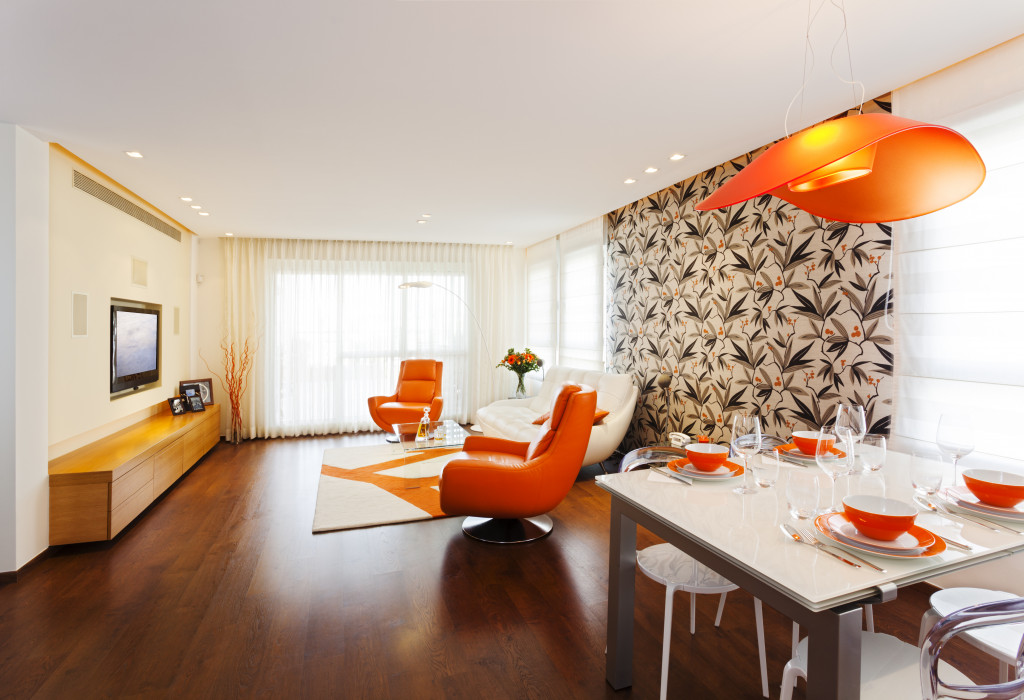• Aesthetics and design play an important role in American homes, impacting your overall mood and well-being.
• Define your style to create a home that reflects your personality and preferences.
• Color, lighting, proportionality, and spatial distribution are common elements of design that can be used to create an atmosphere of comfort and relaxation.
• Take the time to discover your tastes and identify colors, designs, and textures that appeal to you.
When decorating your home, you want to create a space that reflects your personality and style. The design and aesthetics of our living spaces can significantly impact our overall mood and well-being. From the color of the walls to the furniture choices and decor, each element plays a crucial role in the overall ambiance of your home.
Here’s the importance of aesthetics and design in American homes. Whether you’re planning to redecorate your existing space or create a home from scratch, this guide will provide useful tips and inspiration to help you create a beautiful and functional space that meets your unique needs.
Understanding the Importance of Aesthetics and Design
Before delving into the specifics of design elements, it’s essential to understand why aesthetics and design are so important in American homes. Your home is our sanctuary – a place to relax, unwind, and recharge. Aesthetics refers to what we see, hear, smell, and feel in our living spaces and how these sensory experiences shape our moods.
Research shows aesthetic design elements can significantly impact mood, productivity, and emotional well-being. For example, colors can brighten dull spaces, add depth and texture, or create a calming and soothing effect. Interior designers and décor experts can recommend design elements that complement your personality and style while providing functionality.
Moreover, for various reasons, aesthetically pleasing homes can be much easier to sell. First, they make better photographs. These photographs are crucial in attracting potential buyers’ attention. Second, they tend to be well-maintained and easier to stage for viewing. Lastly, the right color palette can make your home more memorable and appealing to buy.

Importance of Individual Design Preferences
One of the critical aspects of home aesthetics and design is individual preference. While the internet and design magazines can offer fresh ideas and inspiration, defining your style is critical. It will help you create a home that reflects your unique personality and preferences. Choosing the right furniture, artwork, and decoration allows you to express your personality and make a statement in your living space.
The key to achieving a cohesive look that you are happy with is by taking the time to discover your tastes and identify the colors, designs, and textures that appeal to you. Whether you like traditional, minimalistic, or eclectic style, work closely with a professional designer to bring your vision to life.
Design Elements that Make a Difference
Design elements vary widely, but some of the most common ones include color, lighting, proportionality, and spatial distribution.
Color
One of the most common design elements is color. Color can evoke emotion, energize a space, and help create an atmosphere of calmness and comfort. An effective way to use colors in your home is to pick a color palette that best reflects your personality and style. You can also opt for neutral colors such as beige or gray for a subtle and sophisticated look.

Lighting
Choosing the proper lighting can also make a huge difference in the overall ambiance of your home. Natural light is essential in any living space as it can help bring warmth, improve mood, and make rooms feel larger. Opt for fixtures that provide enough illumination while still feeling comfortable to the eye.
Lighting also goes hand in hand with colors, so you may want to consider fixtures that will help brighten and enhance the color palette you have chosen for your home.
Proportionality
The design of a room should be proportionate and balanced. This means considering the space available and choosing furniture pieces. Regarding proportionality, it’s crucial to use robust wall bases to determine the proper size of pieces that will fit your room. These bases can also be a boundary for symmetry and spatial distributions in your home.
Spatial Distribution
Lastly, the spatial distribution comes into play regarding how you use the available space in a room. You want to ensure that furniture and other items are not cramped together and that there is enough space for movement.
For instance, if your living room has an open floor plan, you may want to consider arranging chairs and tables around the room’s perimeter. This will allow for more breathing space in the center, creating a sense of coziness and comfort.
Aesthetics and design are essential in American homes; you shouldn’t underestimate their importance. By carefully considering how you utilize these design elements, you can create a living space that reflects your personality and style. Identify your style and use design elements to add that extra personality to your home. Creating a space that reflects your personality and preferences is one of the most cost-effective ways to improve your mood and well-being in your private oasis.



